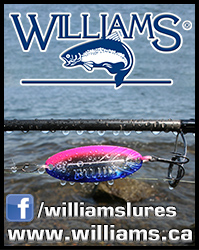Distribution plan set for chinook stocking in Lake Michigan; Strawberry Creek quota reduced, commitment to revise formula for 2014
January 4, 2013
Contact(s): Brad Eggold (414) 382-7921
MADISON – The percentage of chinook salmon stocked by the state headed to each Wisconsin port would remain generally the same for 2013 and the state will work with anglers to refine the fish distribution formula for 2014 and beyond, state fisheries officials say.
That approach allows Wisconsin to meet a federal timeline related to stocking in 2013 while giving state fish managers more time to work with Lake Michigan anglers to develop a distribution model that continues the fantastic fishing on Lake Michigan’s open waters but better maximizes fall fishing opportunities on Lake Michigan tributaries, says Mike Staggs, Wisconsin’s fisheries director.
“We’ve listened to the public and heard their concerns that the current distribution may need to be updated to better fit what’s going on now in Lake Michigan and its tributaries,” Staggs says. “Based on that feedback, we’ll stock fewer chinook in Strawberry Creek and spread those fish around to other ports in 2013, and we’ve committed to refining the formula for 2014 to better reflect current research and angler feedback.”
DNR will stock a total of 798,231 chinook in 2013 in its Lake Michigan ports under an agreement among the states surrounding Lake Michigan to adjust lakewide stocking totals to continue the strong fishery by better balancing the number of predator fish like chinook with available prey fish. Of that total, 150,000 will be stocked at Strawberry Creek, 25,000 fewer than last year, and those fish will be spread among the ports. DNR’s main chinook egg collection station is on Strawberry Creek and that number will allow DNR to meet its egg collection needs while allowing more fish to go to other tributaries anglers can fish.
DNR stocked 1.16 million chinook in 2012. The stocking adjustments by Wisconsin and other states surrounding the lake are needed to compensate for dramatically increasing natural reproduction of chinook salmon and a significant decline in alewives – their primary forage.
Fewer stocked fish should lead to improved survival and growth of the remaining salmon, so biologists don’t believe these adjustments will appreciably impact summer fishing, Staggs says. But the number of fish returning to streams in the fall could change.
For 2013 stockings, whose effects wouldn’t be seen in the fall fishery until 2015 or later, quotas for each port will be reduced proportionally from those used since 2006 – the last time stocking was adjusted, he says.
“We will also make sure that in 2013 and moving forward we’ll equitably distribute fish if we have production shortfalls,” Staggs says. In several past years hatcheries were not able to produce all of the fish on the quotas and to ensure full stocking at Strawberry Creek fish were moved there from nearby ports. “In the future if this happens, we will distribute any cuts proportionally among all of the ports. Strawberry Creek is a statewide production facility and all ports benefit from us maintaining a strong run of spawning fish there.”
The current stocking quotas have worked very well over the past decade to achieve a fair distribution, provide great fishing around the lake, and has resulted in Kewaunee and Algoma ranking as the top ports in terms of chinook and steelhead caught, according to Brad Eggold, fisheries supervisor for southern Lake Michigan.
The model, however, has not been updated recently and it’s time to incorporate better science, recent fishery information, and anglers’ desires for other factors to be included in a distribution model, Eggold says.
Research has shown that all chinook in the lake – whether naturally reproduced or stocked – swim all over the lake and that anglers in Wisconsin, for example, are just as likely to catch a fish that originated in Michigan’s waters during the summer. Preliminary analysis of coded wire tags retrieved from the snouts of stocked chinook caught off Wisconsin harbors in 2012 indicates that 41 percent of the fish originated from Wisconsin stocking sites and 43 percent originated from Michigan DNR stocking sites.
Research underway will help DNR and partner state and federal fisheries agencies better understand what stocked fish do in the fall – how many return to the streams in which they are stocked, and how many stray and return to other streams. Anglers at public meetings on chinook stocking have expressed concern that they are seeing fewer fish during fall tributary fishing.
“We heard from anglers that they enjoy fall tributary fishing and want to make sure our stocking formula maximizes those fishing opportunities,” Eggold says. “We look forward to working with the Lake Michigan Fisheries Forum and other interested anglers to figure out what factors we should include and how much weight to give each to assure the great fishing continues during the summer open water fishery and in the fall in both harbors and tributaries.”










